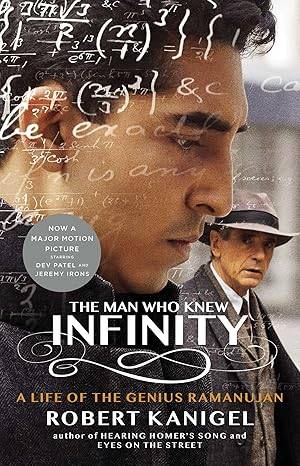
The Man Who Knew Infinity: A Life of the Genius Ramanujan
Check my rate
| Main centres: | 1-3 business days |
| Regional areas: | 3-4 business days |
| Remote areas: | 3-5 business days |

| Main centres: | 1-3 business days |
| Regional areas: | 3-4 business days |
| Remote areas: | 3-5 business days |
Washington Square Press, 2016, softcover, illustrated, index, 438 pages, condition: new.
The story of one of the most improbable and productive collaborations ever chronicled, between a young unschooled Indian prodigy and a great English mathematician. In 1913, a young unschooled Indian clerk wrote a letter to G H Hardy, begging the preeminent English mathematician's opinion on several ideas he had about numbers. Realizing the letter was the work of a genius, Hardy arranged for Srinivasa Ramanujan to come to England. Thus began one of the most improbable and productive collaborations ever chronicled. With a passion for rich and evocative detail, Robert Kanigel takes us from the temples and slums of Madras to the courts and chapels of Cambridge University, where the devout Hindu Ramanujan, "the Prince of Intuition," tested his brilliant theories alongside the sophisticated and eccentric Hardy, "the Apostle of Proof." In time, Ramanujan's creative intensity took its toll: he died at the age of thirty-two and left behind a magical and inspired legacy that is still being plumbed for its secrets today.
"2013 December 22nd was the 125th birth anniversary of . He was a genius whose early death, owing to a multitude of factors not entirely in his control, was a tragedy too profound for tears, as someone said.
That mathematicians are trying to come to terms with his papers and notebooks to this day, is a testimony to his originality. There was a news about his last notebooks on mock modular forms being proven just last month.
This biography by Robert Kanigel is a work of outstanding literary and scholarly accomplishment. The author clearly researched his subject thoroughly. He succeeds in successfully recreating the early 20th century rural Tamilnadu as well as Ramanujan's isolation in war time England for the readers.
I was never good at Mathematics. And i never regretted it anytime until i read some of the mathematical parts in this book. I could understand the importance of Ramanujan's work, thanks to Kanigel's explanation. But i wished i was good enough at Mathematics to at least attempt to experience the beauty of it. Instead, i had to rely on metaphor for it to make any sense to me.
A must read for anybody who is interested in Ramanujan, Mathematics, Hardy, Biographies or any good book."